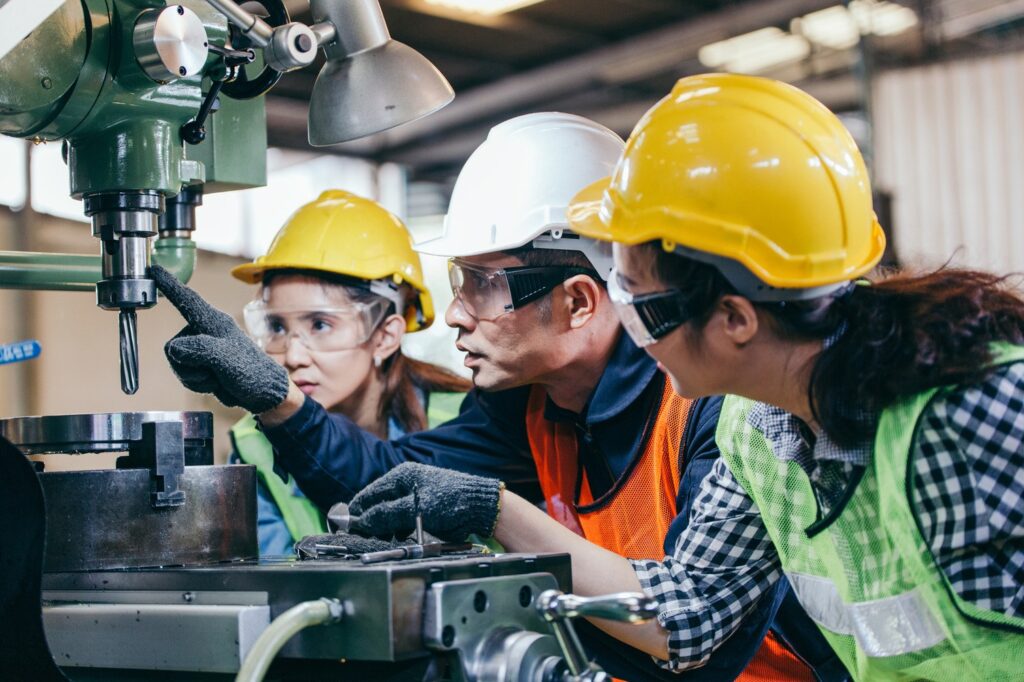TWS is a Great Training Option for Everyone
Learn more about how we can prepare you to advance your career.
The rapid advancement and adoption of technology in the skilled trades have raised some concerns about job security.
Many people wonder if automation and artificial intelligence will end up replacing roles once held by humans, limiting the number of opportunities available and putting current employees at risk.
Exploring the interaction between humans and technology is key to understanding the future of skilled trades.
The skilled trades already benefit from automation.
There’s no point in fearing the day automation makes its way into the skilled trades because it’s already here.
Have You Considered a Career in the Skilled Trades?
Fill out the form to recieve a no obligation info packet.
There are plenty of ways automation makes it easier for skilled tradespeople in all sectors to get their work done more efficiently, accurately, and cost-effectively. Here are some examples:
Task Management Software
Some skilled trades require repeated daily tasks that eat up a lot of valuable time. Tasks management software was designed to automate these recurring responsibilities such as responding to repeated customer concerns, answering emails, and scheduling appointments.
It might not seem like particularly advanced automation compared to more recent advancements, but it’s still helpful for trade workers on a daily basis.
Virtual Reality Training
Automation has even made its way into the training skilled tradespeople undergo to develop specialized skills and knowledge.
For example, virtual reality welding training allows students to enter hyper-realistic simulations where instruction is automated. This makes it possible for welding school participants to train from the comfort of their own homes to supplement their in-school learning.

New: Industrial Maintenance
Learn About Our New Advanced Industrial Maintenance Program in Houston
Tulsa Welding School is proud to announce our newest program offering available at our Houston Campus – Advanced Industrial Maintenance Technology! Learn the skills you need to take on the industries of manufacturing, distribution, energy production and facility maintenance in as few as 7 months.
Inventory Management
Trade professionals who work for service-oriented businesses might have responsibilities related to inventory management. Instead of having to keep track of numerous items manually, inventory management software automates the process.
The software monitors incoming and outgoing items and instantly records the count. It can even notify tradespeople when inventory is low.
Are skilled trades safe from automation?
Despite fearful predictions of a future where robots replace human workers, skilled trades professionals don’t have to worry about the rise of automation.
A study on automation and employment by the McKinsey Global Institute found that less than 5% of all occupations could be fully automated with modern technology. It was also estimated that most professions could only be automated to a small degree, leaving plenty of demand for human workers.
Although most roles are safe from automation, the skilled trades enjoy some additional insulation from the rapid development of technology. Automation requires stable conditions to work optimally.
In other words, the more variables involved in a particular task, the harder it is for automated technology to handle. Since most skilled trades involve significant dexterity, advanced mobility, and unstable environments, robots aren’t anywhere close to replacing talented tradespeople.
Even the most advanced robots fail to match the fine motor skills humans can achieve.
Tradespeople are required to execute a variety of physical motions and continuously adapt to new variables which immediately disqualifies robots that simply repeat pre-determined motions.
Artificial intelligence (AI), which is the driving force behind most automation, struggles to deal with open-ended problems with multiple variables which is the case in any skilled trade environment.
Automation creates new skilled trade jobs.
Many people mistakenly view the availability of jobs as a zero-sum game. If 100 jobs get replaced by technology, that doesn’t necessarily mean that there are 100 fewer jobs available. The changes brought about by automation often create new jobs that never existed previously, requiring people with new skills and expertise.
In the case of skilled trades, there will be a growing demand for talented workers to install, maintain, and operate the automated devices that make their way into the trades. A Deloitte study found that automated technologies replaced 800,000 jobs but created 3.5 million roles within the same span of time. On top of that, the new professions paid an average of $13,000 more than their older counterparts.
We’ve already seen this phenomenon occur in the welding field. The advent of robotic welding saw the automation of simpler welding tasks.
How to protect yourself from automation.
Automation isn’t the boogeyman some people make it out to be in terms of threatening skilled trade jobs. However, it does change the landscape of the trade industries.
The key to preserving your hire ability is ensuring your skills and knowledge remain up to date with the latest technology and industry demands.
Skilled tradespeople who don’t know how to operate modern machinery or software will inevitably get replaced, not by the technology itself, but by professionals with more relevant skills.
That’s why it’s critical for aspiring trades professionals to participate in reputable trade programs that teach the most in-demand skills. Graduates can confidently enter the workforce with highly sought-after and applicable expertise that reflects the current level of automation.
What trades will be replaced by robots?
No skilled trade jobs are getting completely replaced by automation.
Although technology is handling some basic tasks in all trade professions, the more refined and dynamic duties still require human workers. The skilled trade industries are simply too complicated for current automation technology to handle the work.
If you’re interested in learning more about the future of the skilled trades, read about 3 trade careers of tomorrow that you can start training for today.
This blog has been labeled as archived as it may no longer contain the most up-to-date data. For a list of all current blog posts, please visit our blog homepage at https://www.tws.edu/blog/







